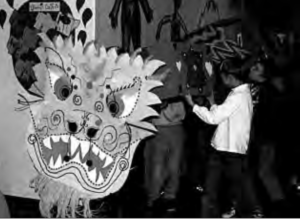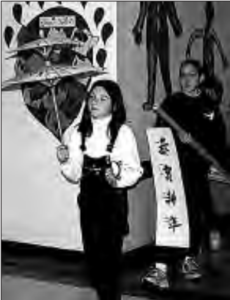Editor’s Introduction

Our experience has been that it is still rare in the United States to find elementary schools in which specific content about Asia is systematically taught. E. D. Hirsch-inspired Core Knowledge Elementary Schools are one notable exception.
The Core Knowledge School movement is a fast-growing national elementary education reform. Core Knowledge elementary schools began in the 1990–91 school year, and at present there are over 900 Core Knowledge schools nationally. In Core Knowledge schools, educators must spend at least 50 percent of classroom time teaching children the Core Knowledge Sequence, which exclusively focuses upon the liberal arts.
In what follows we have asked Connie Jones, President of the Core Knowledge Foundation, to briefly describe the Core Knowledge School movement and to address the issue of why the curriculum developers thought it important to include Asia. We have also excerpted the major Asia-related content directly from the Core Knowledge Sequence. If you have further questions about Core Knowledge Schools, contact:

The Core Knowledge Foundation
801 East High Street
Charlottesville, VA 22902
Phone: 804-977-7550
Fax: 804-977-0021
E-mail: coreknow@coreknowledge.org
Home page: www.coreknowledge.org
The Core Knowledge Movement has grown out of ideas first expressed in Cultural Literacy: What Every American Needs to Know (1987) and developed in The Schools We Need and Why We Don’t Have Them (1996), both by E. D. Hirsch, Jr., professor of education and humanities at the University of Virginia.
In Cultural Literacy, Professor Hirsch demonstrated that true literacy requires not only the ability to “decode” or sound out the words on a page, but also familiarity with a broad range of background knowledge taken for granted by writers and speakers in the United States. “To be truly literate,” Professor Hirsch noted, “citizens must be able to grasp the meaning of any piece of writing addressed to the general reader.” Those who possess this shared background knowledge can, for example, understand a reference in a newspaper to the Great Wall of China or the Pacific Rim. But those who lack the assumed knowledge are excluded from understanding many messages in various media, and are thus excluded from full participation in our national life.
How can this be achieved? Core Knowledge starts with a clear and specific set of content guidelines that sets forth a plan for building a strong foundation of knowledge for every student grade by grade. This sequential building of knowledge not only helps ensure that children enter each new grade ready to learn, but also helps prevent the many repetitions and gaps that characterize much current schooling. This structure carries through all content areas, so students deepen their understanding of important concepts from history, geography, science, mathematics, fine arts and music as they develop related skills.

Courtesy of the Core Knowledge Foundation
Respect for the diversity in our population is fostered by the knowledge specified in the Core Knowledge Sequence, which has been reviewed by distinguished scholars in the field of multicultural studies. The Core Knowledge Sequence is designed to provide access to the best knowledge available, including significant knowledge of diverse peoples and cultures. As early as kindergarten and first grade, students are shown that people all around the world tell certain stories that, while they differ in details, have much in common, as they compare and contrast folk tales from different lands such as Lon Po Po (China) and Little Red Riding Hood; Issun boshi, or One-Inch Boy (Japan), Tom Thumb (England), and the Little Finger of the Watermelon Patch (Vietnam).
Students are introduced to major world religions starting in first grade, beginning with a focus on geography and major symbols and figures, for the purposes of laying the groundwork to understand the role religion has played as a shaping force in the story of civilization and for instilling a sense of understanding and respect for one another beginning in the early years of schooling.
Asian studies play an important role in the Core Knowledge Sequence and are integrated throughout the grades in the language arts, world history, geography, music, fine arts, math, and science. Students in second grade are introduced to Asia through an extensive study of geography, stories, architecture, and other important cultural contributions. Students in fourth grade study in greater depth the dynasties and conquerors of China as well as examples of Chinese art. Fifth graders study Feudal Japan, its history and culture, along with an in-depth study of Japan’s geography.
We respect and appreciate that which we understand. True understanding results from a careful building of knowledge over time. Schools play such an important role in building the background knowledge and understanding that will lead their students to lasting respect, cooperation, and solidarity as a society.

